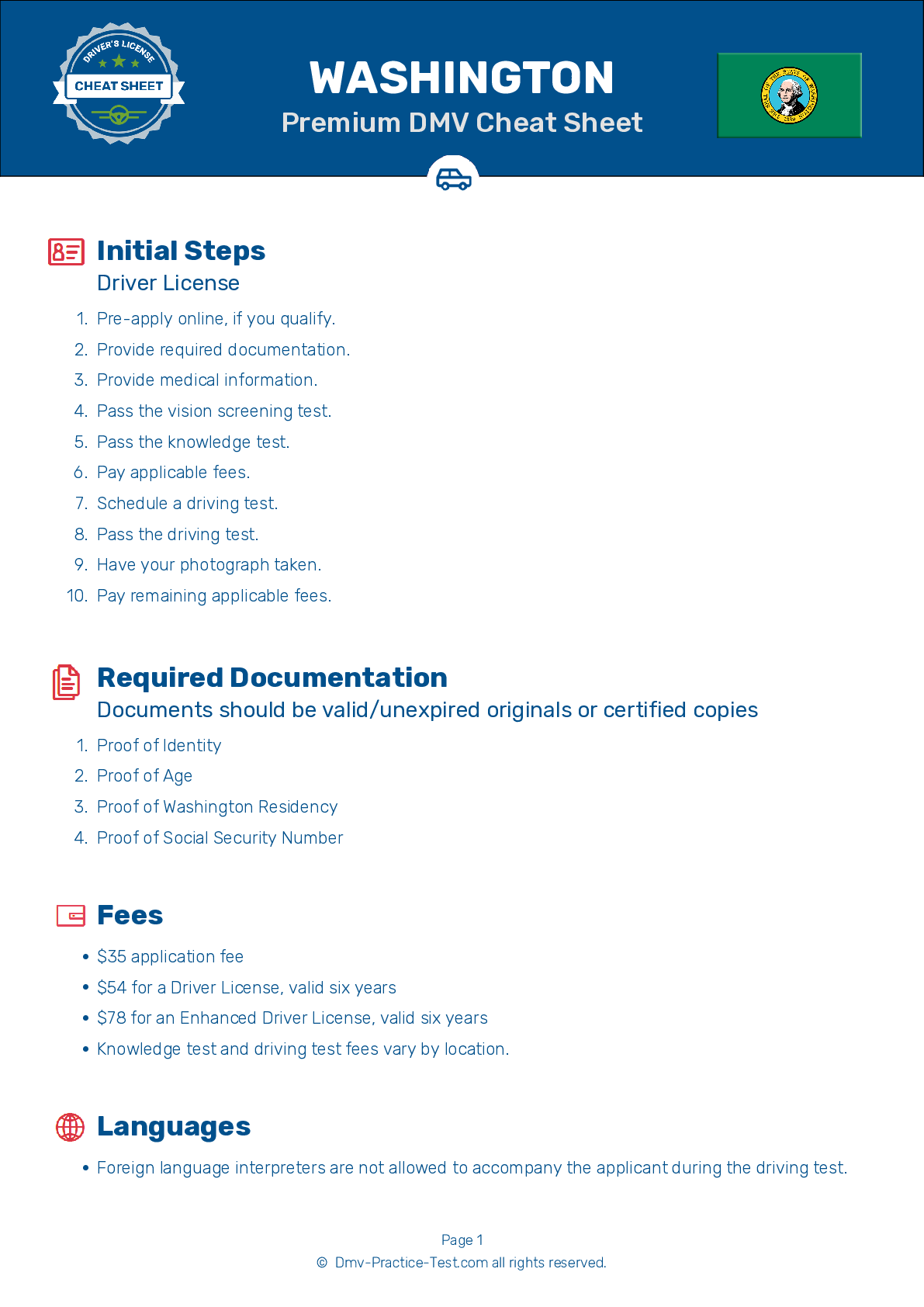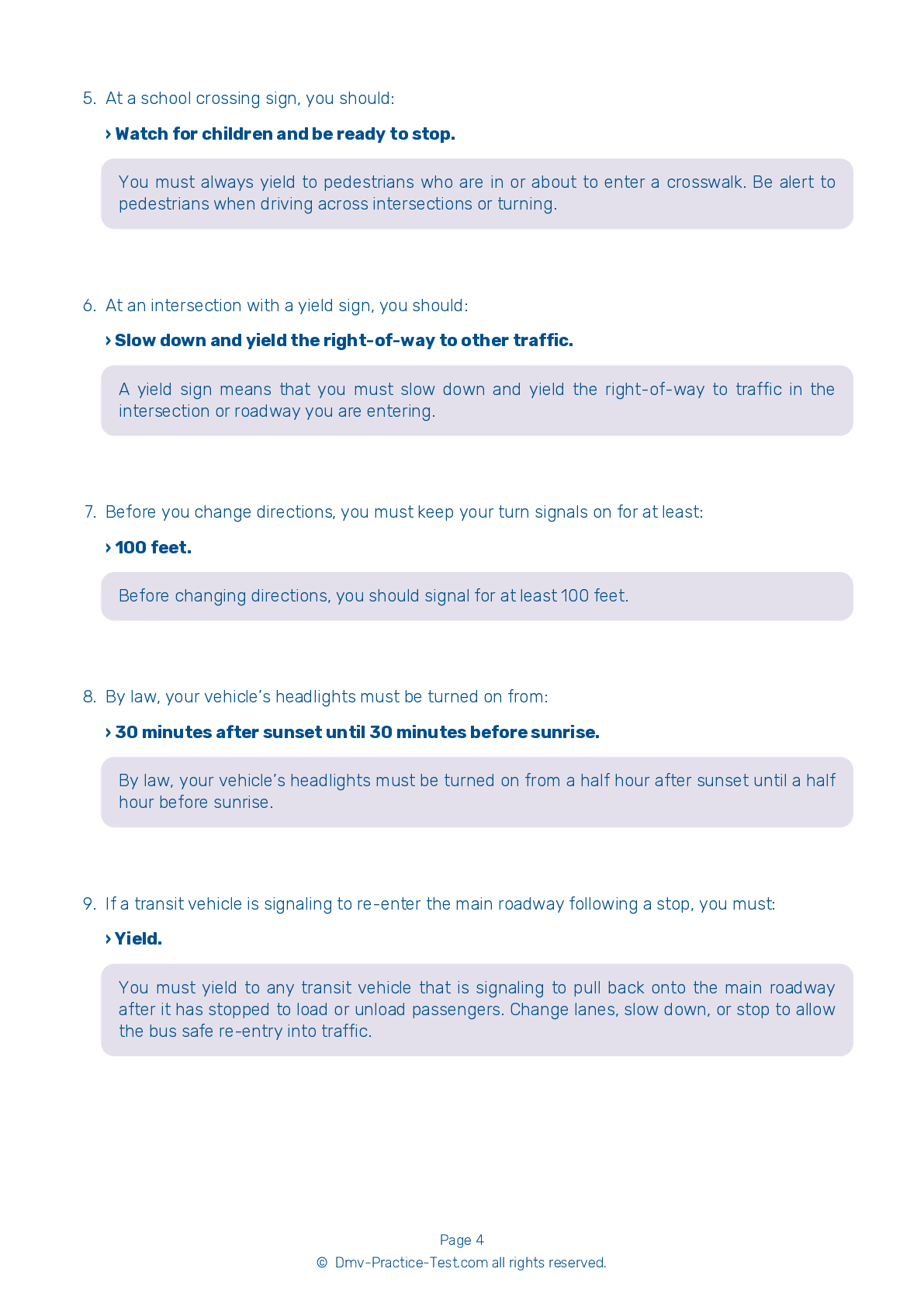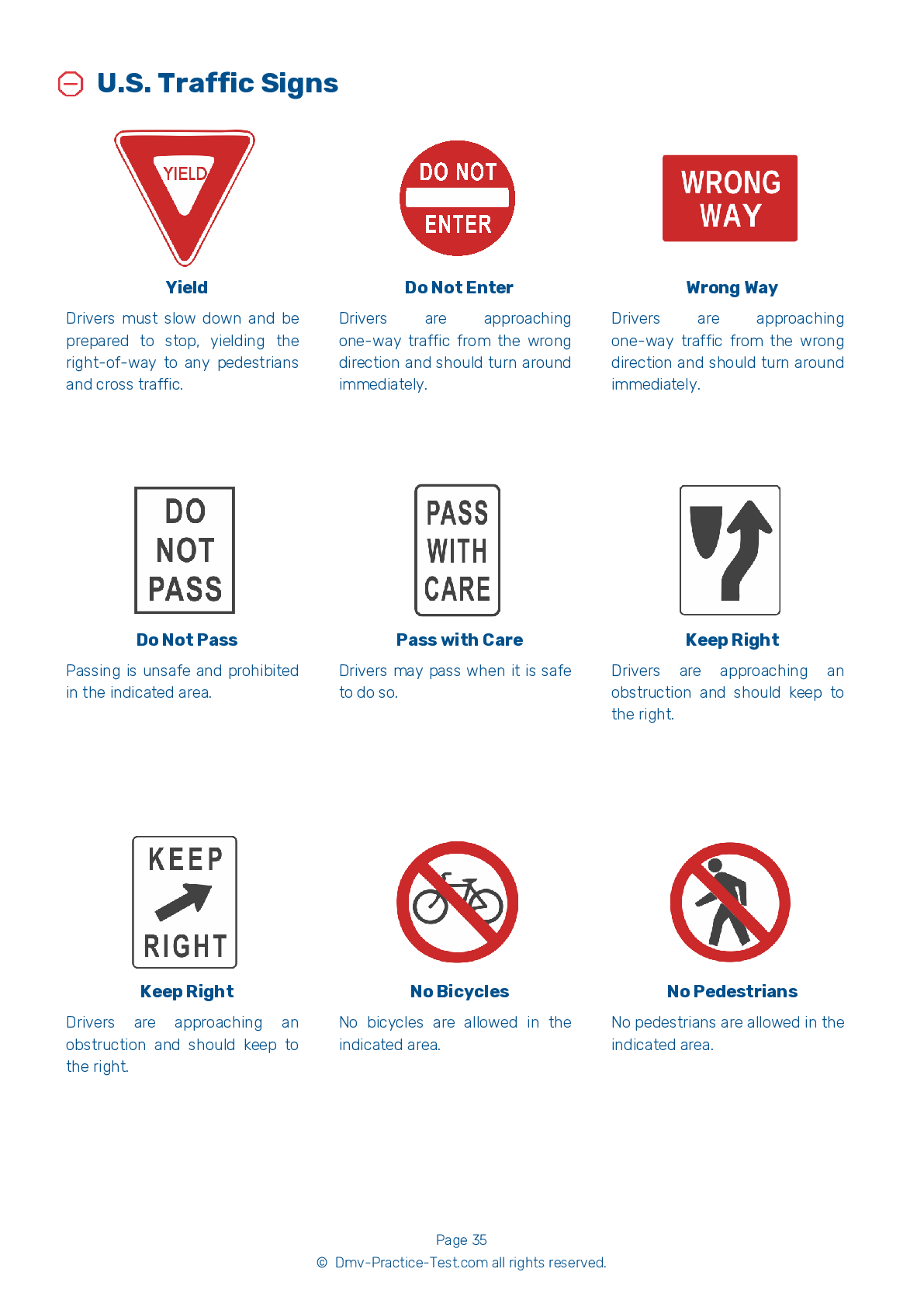FREE Washington DMV Practice Test #23
The Washington DMV practise examinations have been updated for January 2025. It includes questions based on the Washington Driver Handbook's most significant traffic signals and legislation for 2025. Use actual questions that are very similar (often identical!) to the DMV driving permit test and driver's licence exam to study for the DMV driving permit test and driver's licence exam.
On the practise exam, each question gets a tip and explanation to help you remember the concepts. The written component of the official Washington DMV test will feature questions about traffic rules, traffic signs, and driving statutes, as well as knowledge from the Driver Handbook.
To obtain a passing grade, you must correctly answer 20 of the 25 questions. Use the practise exam provided by the Washington Department of Motor Vehicles to help you prepare for your instruction permit or driver's licence.
The DMV exam is available in several languages.
Using any kind of testing assistance will result in an automatic fail, and the DMV may take additional action against your driver's licence, so stay away from it.
1 . To turn right at an intersection with a steady red light, you should:
At a steady red light, you may turn right provided that no posted sign prohibits it. You must come to a full stop first. Always use your turn signal before making any turn.
2 . A flashing red traffic signal at an intersection has the same requirements as:
When approaching a flashing red signal, you must stop and yield to all traffic that does not have to stop.
3 . You may cross solid yellow lines:
As a general rule, broken traffic lines may be crossed but solid lines may not. Solid yellow lines may be crossed only when the driver is making a turn.
4 . You are driving when it begins to rain. You should:
When heavy rain reduces visibility, reduce your speed. Turn on your headlights so other drivers can see your vehicle. If the rain is so heavy that you are unable to see clearly, drive onto the shoulder and stop until the rain lets up.
5 . When turning left, drivers must yield the right-of-way to:
When turning left, drivers must yield the right-of-way to oncoming traffic. Drivers must also always yield the right-of-way to pedestrians, bicyclists, and other drivers who are already in the intersection.
6 . Do not pass:
You should never pass if there is an oncoming vehicle in the passing lane, if your view is blocked by a curve or hill, at an intersection, before or on a railroad crossing or bridge, or in any other no passing zone. Unless you are on the opposite side of a multilane roadway with a median or shared center turn lane, you may not pass a stopped school bus that has its flashing red lights activated.
See the exact questions that will be on the 2025 Washington DMV exam.
99.2% of people who use the cheat sheet pass the FIRST TIME
LT gives us an insight on how the cheat sheet provided her with all the study questions she needed before taking her test.
Joe initially studied with the handbook and failed his test, he eventually found us online, studied and pass his test the first time around.
2025 Washington | Frequently Asked Questions
1. Complete a driver education course if you're under 15 ½.
2. Visit a driver licensing office.
3. Provide proof of identity, Social Security number, and residence.
4. Pass the knowledge test.
5. Pay the required fee.
6. If you're under 18, a parent or guardian must sign the application.
Remember, with a permit, you must always have an adult 21 years or older in the car with you.
1. Not checking mirrors and blind spots.
2. Incorrect signaling or forgetting to signal.
3. Lack of steering control.
4. Improper lane positioning and changing.
5. Not following traffic signs or signals.
6. Inadequate observation at intersections.
7. Speeding or driving too slowly.
8. Failing to yield the right of way where necessary.
Remember, practice is key to overcoming these errors.



